Chrysanthemums: Cultivate Colorful Blooms with Expert Growing Tips
Chrysanthemums bring a burst of color to any garden. Known for their vibrant hues and varied bloom shapes, they light up autumn landscapes. For gardeners aiming to extend their blooming season, chrysanthemums, or “mums,” are a perfect choice. With the right care and attention, these hardy flowers can add long-lasting beauty to your outdoor space.
The Allure of Chrysanthemums
Chrysanthemums are not just beautiful; they’re steeped in history and tradition. Originating in China over 2,500 years ago, they spread to Japan and eventually to Europe and North America. These blooms symbolize longevity, loyalty, and love in various cultures. They come in a variety of shapes, sizes, and colors, making them versatile for all kinds of garden designs.
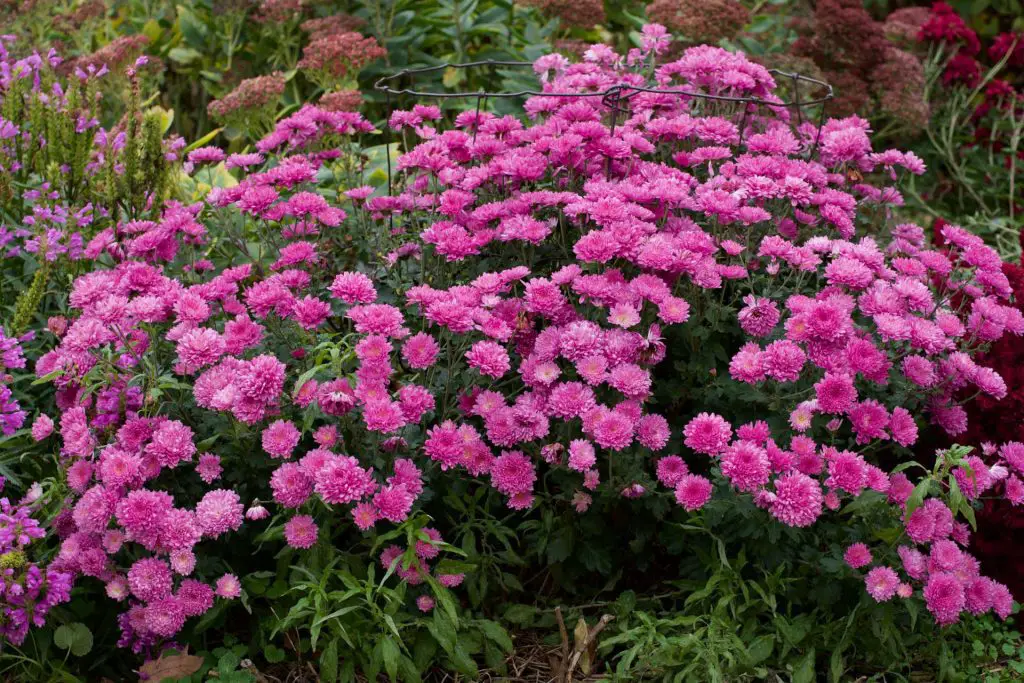
Choosing the Right Variety for Your Garden
The wide range of chrysanthemum varieties can be overwhelming, but a bit of guidance helps narrow down options.
Popular Types of Chrysanthemums
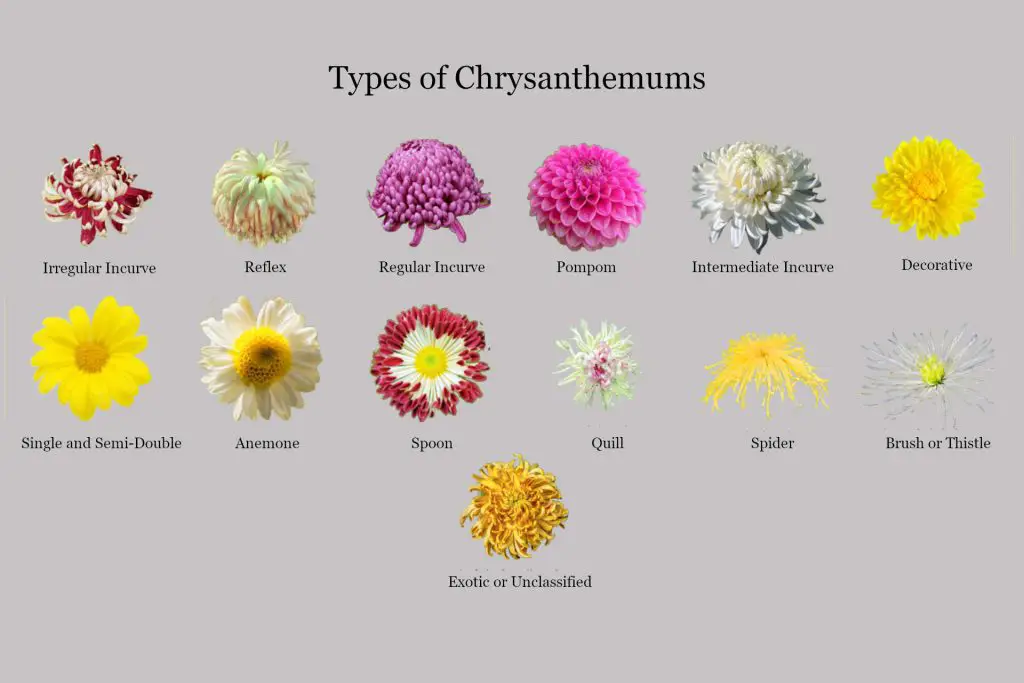
Chrysanthemums are available in multiple forms, including Single, Anemone, Decorative, Pompon, and Spider types. Each has a unique flower shape and growth habit, from the delicate simplicity of Single mums to the full, multi-petaled appearance of Decorative varieties. Selecting the right type for your garden can enhance its design and texture.
13 Types of Chrysanthemums
- Irregular Incurve
- Features large flowers (up to 10 inches) with upper florets that curve inward and lower florets that fall outward. Examples include ‘Bola de Oro’ and ‘Kokka Bunmi’.
- Reflex
- Characterized by overlapping petals that curve downward, resembling bird feathers. These blooms typically measure 4-6 inches across and can grow up to 4 feet tall.
- Regular Incurve
- Known for their compact, rounded flower heads that curve inward, forming a dense sphere. Commonly referred to as “football mums,” they require staking due to their size.
- Decorative
- This class has a flatter shape with upper petals curving upward and lower petals bending backward. They are among the most common types available in garden centers.
- Intermediate Incurve
- Falls between irregular and regular incurves in size and shape, featuring shorter, less densely packed florets for a more open appearance.
- Pompom
- Small, globe-like blooms that can be either incurved or reflexed. They are popular for their compact size and are often used in arrangements.
- Single and Semi-Double
- Resembling daisies, these blooms have a central disk surrounded by one or more rows of ray petals. They typically measure 2-3 inches across.
- Anemone
- Named for their resemblance to sea anemones, these flowers have a prominent raised center surrounded by ray petals. They are known for their late-season blooming.
- Spoon
- Features spatulate ray petals that resemble spoons at the tips. These flowers can be large or small with a visible center disk.
- Quill
- Composed of tubular florets that may have closed or open tips, quill chrysanthemums are known for their unique, feather-like appearance.
- Spider
- Characterized by long, slender petals that curl or hook at the ends, resembling spider legs. These are often used in cut flower arrangements.
- Brush or Thistle
- These exotic-looking chrysanthemums have thin, thread-like florets that may coil at the ends, creating a dramatic effect in arrangements.
- Exotic or Unclassified
- This type will include various hybrids and unique forms that do not fit neatly into the other classifications.
Hardy Mums (Perennial) vs. Florist Mums (Annual)
Chrysanthemums, are primarily classified as herbaceous perennials, meaning they can return year after year under the right conditions. However, there is some nuance in this classification due to the different types of chrysanthemums available.
Gardeners often face a choice: perennial or annual chrysanthemums. Hardy mums, as the name implies, are hardy and return each year, providing ongoing beauty. Florist mums, on the other hand, tend to have brighter, showy blooms but only last a single season. If your climate has harsh winters, florist varieties might be more suitable, while perennial types work well in moderate climates.
| Feature | Garden Mums (Perennials) | Florist Mums (Annuals) |
|---|---|---|
| Hardiness | Hardy in zones 4-9 | Hardy in zones 7-9 |
| Lifespan | Return year after year | Typically die after one season |
| Planting Time | Best planted in spring | Often purchased in fall |
| Maintenance | Minimal; requires some care | Requires replacement each season |
Color and Shape Options
Chrysanthemums offer a spectrum of colors—reds, pinks, yellows, purples, and whites. They can complement nearly any garden theme, and the variety of bloom shapes (button-like, daisy-shaped, or shaggy) allows for creative combinations. Choosing a range of colors and forms adds visual interest to your garden.
Site Selection: The Perfect Location for Mums
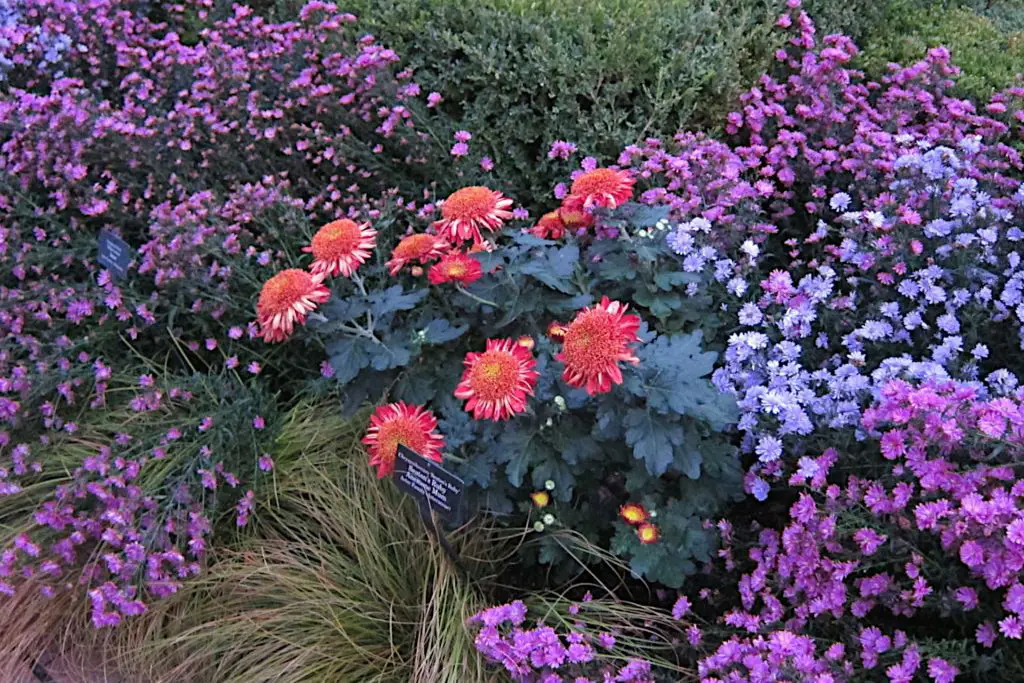
Proper site selection plays a major role in the health and blooming potential of chrysanthemums.
Sunlight Needs
Chrysanthemums thrive in full sun, needing at least six hours of sunlight daily. This ensures maximum bloom potential and keeps plants compact and healthy. While they tolerate partial shade, fewer flowers and leggier growth might result. A sunny location enhances color vibrancy.
Soil Preferences
Chrysanthemums prefer well-draining soil with a pH ranging from 6.5 to 7.0. Sandy loam works well, but adding compost or organic matter improves drainage and nutrient content. Avoid heavy, clay soils, as they retain too much water, which can lead to root rot. Testing your soil’s pH before planting helps ensure optimal conditions.
Space and Airflow
Spacing is key for healthy plants. Chrysanthemums need adequate space and airflow to reduce disease risk and ensure even growth. Space plants 18-24 inches apart, allowing room for them to spread and grow without becoming overcrowded. Good airflow around the foliage discourages mildew and other fungal diseases.
Planting Chrysanthemums: A Step-by-Step Guide
Proper planting sets the stage for vibrant growth. Timing, method, and care are all important.
When to Plant
In most regions, chrysanthemums are best planted in the spring after the last frost. Early planting gives roots time to establish before the heat of summer or chill of fall. In milder climates, fall planting can work, but the plants may require extra protection over winter.
Starting from Seed vs. Transplanting
Chrysanthemums can be grown from seeds, cuttings, or nursery transplants. Starting from seeds requires patience, as it takes time for blooms to appear. Cuttings offer a faster route, while transplants from nurseries are the quickest way to achieve full-grown plants. For beginners, nursery plants may be the best option.
Planting Depth and Spacing
To plant, dig a hole that matches the depth of the pot the chrysanthemum came in. Place the plant, cover with soil, and press gently to eliminate air pockets. Space each plant 18-24 inches apart to provide room for growth. A layer of mulch around the plants helps retain moisture and suppress weeds.
Caring for Your Chrysanthemums
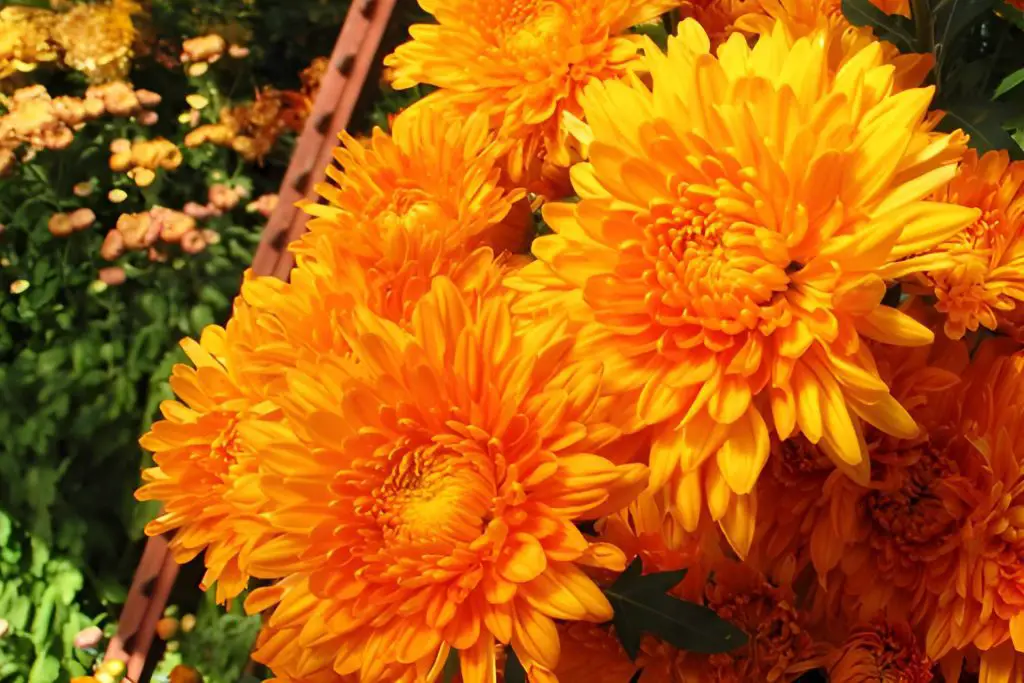
Once planted, chrysanthemums benefit from regular care to thrive and bloom fully even during fall.
Watering and Mulching
Chrysanthemums need consistent watering, particularly in dry spells. Water at the base to avoid wetting the foliage, which can encourage fungal diseases. Keeping the soil moist, not waterlogged, promotes healthy root growth. A 2-3 inch layer of mulch helps retain moisture and keep roots cool.
Fertilizing Tips for Blooms
Fertilization is key for vibrant blooms. A balanced, water-soluble fertilizer is ideal for mums, applied every 2-4 weeks during the growing season. Early in the season, use a nitrogen-rich fertilizer for foliage growth. Switch to a phosphorus-rich fertilizer as buds form to enhance blooming.
Pinching and Deadheading
Pinching back new growth during early summer encourages bushier plants and more blooms. Simply pinch off the top 1-2 inches of growth every few weeks until mid-July. Deadheading spent flowers not only keeps plants looking tidy but also promotes new flower production throughout the season.
Chrysanthemum Pests and Diseases: Prevention and Solutions
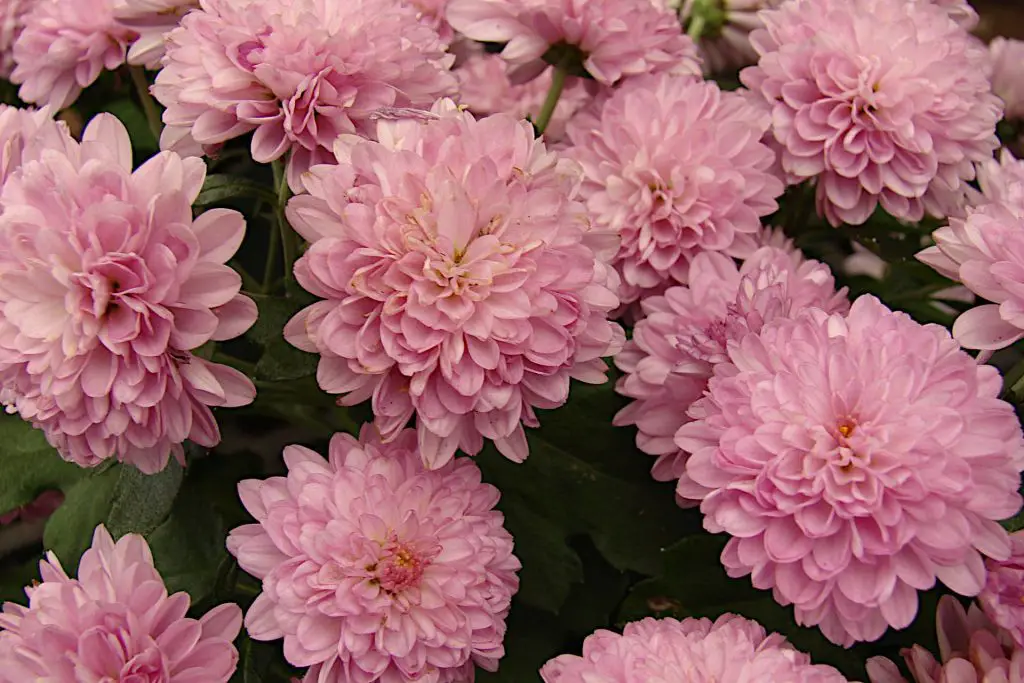
Chrysanthemums are generally resilient, but they can fall victim to pests and diseases.
Common Pests
Aphids, spider mites, and leaf miners are the most common pests. To manage them, use insecticidal soap or neem oil. Regularly inspect plants for signs of infestation, such as sticky leaves or stippling on foliage.
Diseases to Watch For
Powdery mildew, rust, and leaf spot are potential diseases affecting mums. Powdery mildew appears as white, powder-like patches, while rust shows up as orange pustules. Leaf spot causes dark, irregular marks on foliage. Use a fungicide at the first sign of disease, and maintain good air circulation.
Preventative Measures
Prevent issues by keeping the garden clean. Remove dead plant debris and spent blooms, as these can harbor pests and diseases. Water early in the day to allow foliage to dry, reducing the chances of fungal growth.
Overwintering Chrysanthemums: Protecting Perennial Mums
For perennial chrysanthemums, preparing for winter is essential to ensure they return in full bloom the following year.
Preparation for Winter
In colder climates, cut back chrysanthemums to 6-8 inches after the first frost. Removing spent foliage reduces disease risk. For regions with milder winters, leave stems in place, as they help protect the root crown.
Mulching for Winter
A thick layer of mulch—straw, shredded leaves, or pine needles—insulates the roots from extreme cold. Apply a 4-6 inch layer around the base, but avoid piling it against the stems. This protective barrier keeps the roots safe until spring.
Container Chrysanthemums
For potted chrysanthemums, move the containers indoors before the first frost. Keep them in a cool, well-lit area, and water sparingly through winter. Replant outdoors once the risk of frost has passed, and they should continue to thrive.
Creative Uses for Chrysanthemums in Garden Design
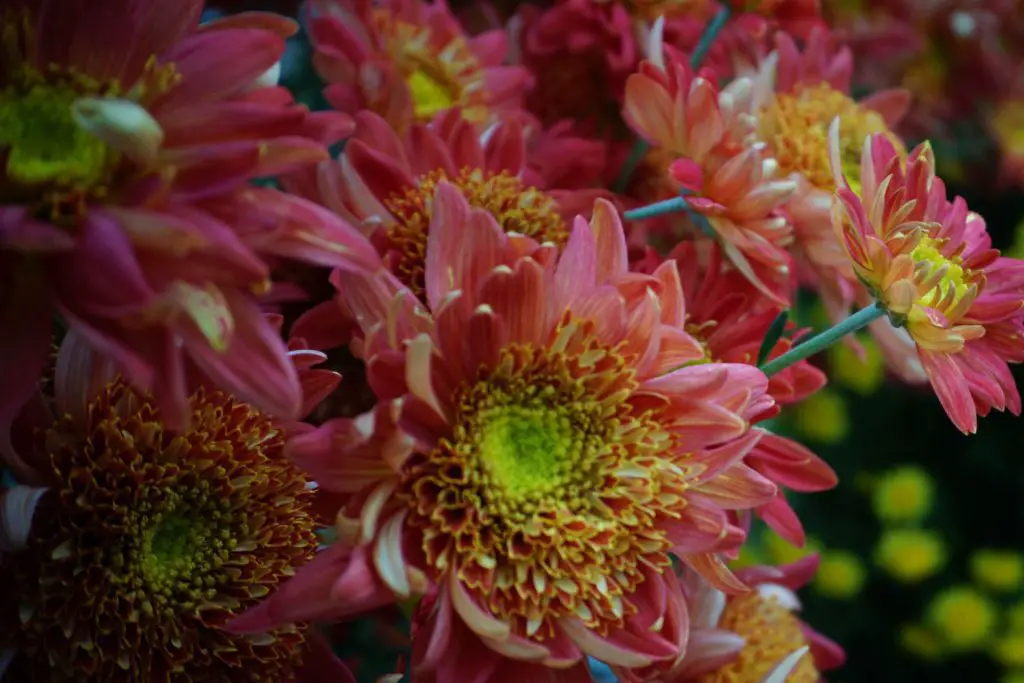
Chrysanthemums can be versatile design elements, brightening borders, containers, and arrangements.
Mixing with Other Fall Bloomers
Pairing mums with other autumn flowers like asters, sedums, and ornamental grasses creates a layered and textured garden design. The varied heights, shapes, and colors of these plants create interest and ensure a continuous display of blooms throughout the fall.
Chrysanthemum Borders and Containers
Mums make excellent border plants, adding a splash of color along pathways and garden edges. In containers, they pair well with trailing plants like ivy or ornamental sweet potato vines. Combining chrysanthemums of different colors and sizes creates eye-catching patio or porch displays.
Cut Flowers and Indoor Displays
Chrysanthemums are long-lasting cut flowers. Harvest them in the morning once buds are partially open for maximum vase life. Strip leaves from the lower stems before arranging in water. A few mums in a vase bring fall color indoors, brightening any room.
Maximizing Bloom Time and Color

Chrysanthemums bloom for weeks, but certain techniques can extend their blooming period and enhance color.
Extending the Bloom Period
To extend bloom time, plant different varieties with staggered blooming periods. Early, mid, and late-season bloomers can ensure continuous color throughout fall. Pinching stems early in the season encourages branching and results in more blooms.
Maintaining Vibrant Color
The color of chrysanthemum blooms can fade in insufficient light. Ensure they receive at least six hours of sunlight daily for the brightest and most vibrant colors. Pruning spent blooms keeps the plants healthy and encourages new flower production.
Bringing Year-Round Beauty to Your Garden with Chrysanthemums
Chrysanthemums are more than just a fall flower. With the right variety selection, proper care, and thoughtful design, they can become a standout feature in your garden. Whether lining a pathway, filling containers, or adding indoor flair, chrysanthemums bring warmth and brightness to any space. With these growing tips, gardeners can enjoy the lasting beauty of mums year after year.
